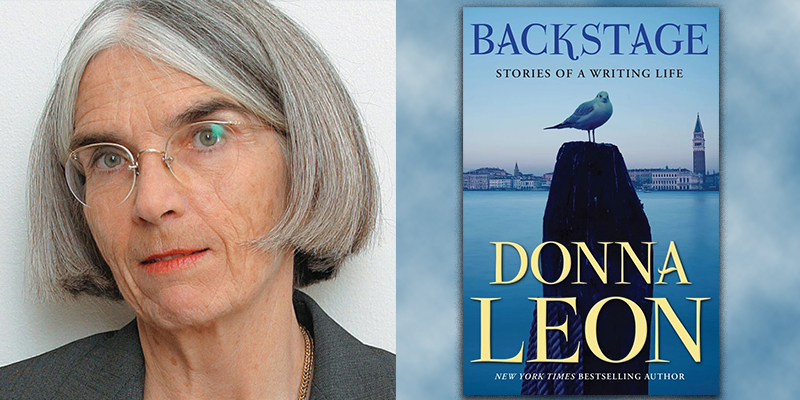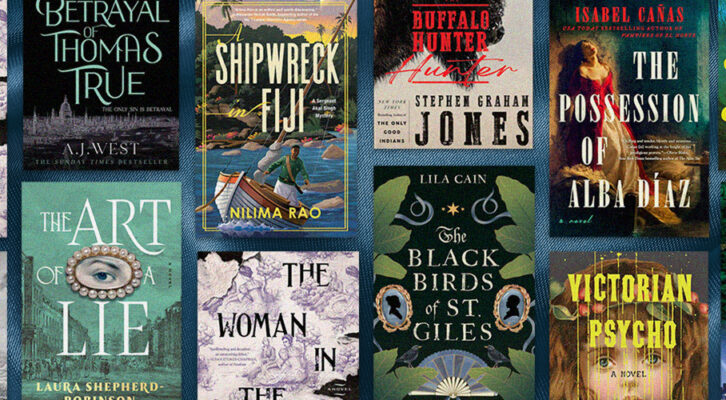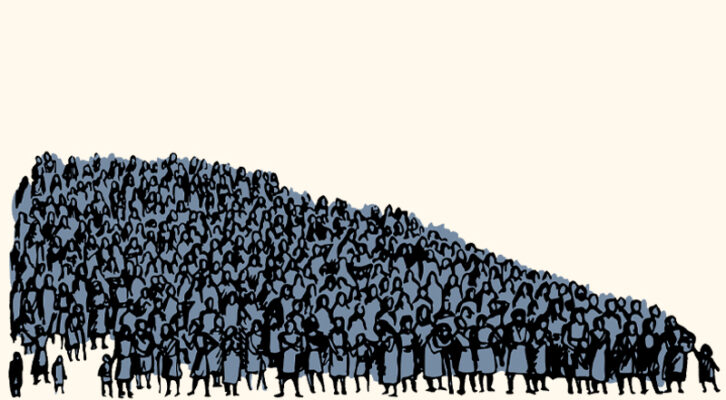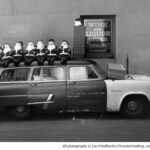‘Show, don’t tell.’ ‘Show, don’t tell.’ How many teachers of creative writing have beaten their heads—and their students’ heads—against the wall as they repeat this injunction? Cut down on the narrative explanations and let the action of the novel show what is happening. Don’t tell the reader what a character is like: make that character show his soul with a revelatory gesture or word.
One pedagogical tactic that desperate teachers might employ is to direct the attention of their students to the novels of Ross Macdonald, for there are few better, more concrete examples of a writer who went quietly and artfully about the business of showing his readers the souls of his characters. Even more artfully, Macdonald kept authorial comment to a minimum while allowing the characters in his novels to strip themselves—or one another—bare with the words they hurled or simply let drop inattentively.
In the case of the crime novel, there is another professorial injunction that is much repeated: the plot must move like the flight of an arrow, always aiming at a single target. Of course, this arrow can be buffeted about by the winds of art or skill or craft and zig a bit in one direction or zag a bit in the other, but the plot should always be headed in one direction, towards the revelation of the motivation, and thus the perpetrator, of whatever crime the novel examines.
And here again Macdonald can serve as an example, for he is the William Tell of plotters. He’s also a deft hand at zigging and zagging, but no matter what pirouettes or divagations his arrows make, and even if they take twenty years to get to the target, they always land smack in the smallest of those concentric circles.
Lit crit is filled with the most idle sort of speculation about the literary ancestors of writers, and all manner of progeny spring forth from the strangest of putative parents. Homer has become the grandfather of almost anyone who tells a linear story, and Proustian parthenogenesis is claimed for anyone who takes a look inside the heart or head of a character. In Macdonald’s case, the family tree is firmly rooted in the novels of Charles Dickens, at least the part of the heritage that has to do with plotting. The solution to the mystery at the heart of Bleak House lies two decades in the past, and the identity of Pip’s anonymous patron in Great Expectations is not revealed until the end of the book, and that too is linked to events in the distant past.
Macdonald begins his Lew Archer novels with a problem in the present—a missing heir, a contested will, a stolen heirloom—which he is hired to investigate, and the arrow of the plot, though aimed from the present into the future, is sure to flip around and start flying into the past, striking down victims as it goes. Back in time it streaks, a generation, two, until it strikes hard and fast in some event or person whose corrupting shadow will be shown to loom over the present. Think of Goya at his bleakest—a father devouring his progeny, the hands of the innocent thrown up in a useless attempt to prevent death—and you have an idea of what Lew Archer’s investigations will turn up. ‘I had handled cases which opened up gradually like fissures in the firm ground of the present, cleaving far down through the strata of the past’ (The Chill, 1963). In novel after novel, some person in the present asks Archer to look into a problem, hoping that the future will thus become more secure. But almost invariably, the first domino falls in the opposite direction, and the book sweeps into the past, knocking down repu- tations and old truths. Very quickly, the future is infected by the scent of death emanating from those unlocked secrets, and bodies begin to pile up.
There being so many, it is difficult to single out Ross Macdonald’s masterpiece, but The Blue Hammer certainly comes as close as any. Hired by a wealthy woman to investigate the disappearance of a painting from her home, Archer drives up a private road to speak to the owners, Jack and Ruth Biemeyer, and finds them on the court behind their sprawling home, playing tennis like ‘prisoners in an exercise yard’.
When Archer explains that he is late because he had ‘some trouble finding your road,’ Jack Biemeyer tells him he could have asked anybody in town because ‘Everybody knows where Jack Biemeyer lives. Even the planes coming in use my home as a landmark.’
Show the location, show the location, the huddled students are told. Well, how’s this for showing? ‘We trekked to the far side of a big central room.’ Then there is Mrs Biemeyer’s explanation for her delay in noticing the absence of the painting: ‘I don’t come into this room every day.’ Just in case Archer hasn’t grasped the wealth of the people who are going to hire him, Biemeyer laments that ‘There ought to be some place in a four-hundred-thousand-dollar building where a man can sit down in peace.’ This in 1976, when that sum bought a lot more house than it does today. And notice that Biemeyer refers to his own home as a ‘building’.
Archer is asked to try to find the painting, which resembles the work of Richard Chantry, a famous local painter who disappeared more than two decades before. The Biemeyers’ daughter is involved in some way with Fred Johnson, a no-longer-young student at the nearby college, who is passionately interested in Chantry’s work. And there we have it: the classic Ross Macdonald takeoff. A young woman is perceived to be in jeopardy, her young man has questionable motives for his interest in her, and the hands of the clock have been turned back a generation. The more Archer tries to make sense of the present, the more the grasping hands of the past reach out to pull him backwards, and the more evident it becomes that remote events are the real causes of what happens in the book.
Soon Archer stumbles on the first murder victim, who mutters Chantry’s name before dying. But if Chantry is correctly presumed to be dead these many years, why is a dying man naming him, and how can this man have sold what might be a recently painted Chantry?
The woman in the painting is identified as Mildred Mead, a woman over whom men fought decades before. Her presence, image, and absence haunt the book, and her raw sexual appeal is felt by most of the male characters, including Archer, who has the attractive quality of responding to and appreciating women. When he meets a young woman journalist, ‘Her passage left vibrations on the air. The vibrations lingered in my body.’ Those vibrations pass between them both, and it is not long before they are checking into the same hotel room. The manner in which Archer presents his interest in women might today be seen as curiously old-fashioned, though one wonders when admiration, affection, and protective love went out of fashion. In the tradition of the Golden Age of crime writing, Macdonald mentions sexual activity but does not describe it.
Archer—no zealot in search of social justice, no crusader in defense of the oppressed—occasionally reveals the ethical underpinnings of his life and work: ‘There were pairs of lovers here and there in the grass instead of dead men, and that was good.’ He speaks of his failed marriage with constant regret and blames himself entirely for its failure. He writes of people, even the bad, with the compassion that comes of an understanding of human weakness, and his sympathy for the people life has turned into failures is bottomless. His contempt for the powerful and arrogant is clear, though here, as well, he allows them to dig their own graves; he shows them as they are, rendering comment superfluous. Jack Biemeyer, told that ‘A woman’s life may be at stake,’ responds only, ‘People die every day.’ It is not always heartlessness that the characters inadvertently reveal. A hard-nosed policeman, speaking of the failure of homosexuals to stay the course of life, surprises Archer by relenting, adding, ‘And they have a tougher course to run than most of us.’
As in Dickens, Macdonald’s chickens always come home to roost. Though the villains kill and maim in their attempt to keep their secrets hidden, once Archer has started to poke around in the past, facts come to light, leading to surmises, connections, and ultimately to revelation. Sustaining this is prose so elegant and rich as to drive any writer to fits of envy. Every page contains a turn of phrase that is beyond imitation, a simile beyond praise. Young policemen wear ‘light summery clothes and dark wintry faces’. ‘Her eyes brightened with interest, and with the superiority that liars feel towards the people they lie to.’ After a party, ‘the room was like a visible hangover’.
‘Both physically and emotionally, I thought, she was a bit dilapidated.’ ‘The sunset spread across the sea like a conflagration so intense that it fed on water.’ Almost any page of the Archer novels contains an example of this authorial largesse. The Chill is filled with them: ‘A young man with an untrimmed beard and rebellious eyes looked like a conscientious objector to everything.’ ‘Her hair was dyed black, with a greenish sheen on it like certain ducks.’ ‘Kincaid was a frightened man who valued his status the way some previous generations valued their souls.’ How strong is the temptation to steal phrases from him. The prose, alas, is so distinctively his own, the theft would be too easily traced and Lew Archer would solve the case in a moment.
How rare and how refreshing, in this age of crime novels filled with graphic descriptions of sex and violence and with autopsies that run on for pages, to find a writer who, like the Greeks, prefers to keep the violence offstage and whose interest is not in the violence itself but in understanding what brought it about and how it has blighted the lives of all those touched by it.
The Blue Hammer, like the other Archer novels, grows more complicated as the plot unfolds and Archer becomes ever more driven to learn what might have happened, and why. Each new discovery leads to another, and many of them lead to murder. A man is drowned, a long-dead body is unearthed, and different people turn out not to be who they appear to be, or were. Archer moves doggedly forward, driven by his desire to understand past and present events as well as by his compassion for the people haunted and destroyed by those events. In the final pages of the book, the whole wretched fabric of jealousy, spite, and a twisted combination of terror and possessiveness that calls itself love is ripped to tatters, revealing the monstrous forms into which human weakness can be moulded. Archer—who has served, however inadvertently, as an avenging angel in the book—can view what remains only with pity. Such is Macdonald’s brilliance as a writer that the reader is lured into feeling the same emotion.
________________________


















